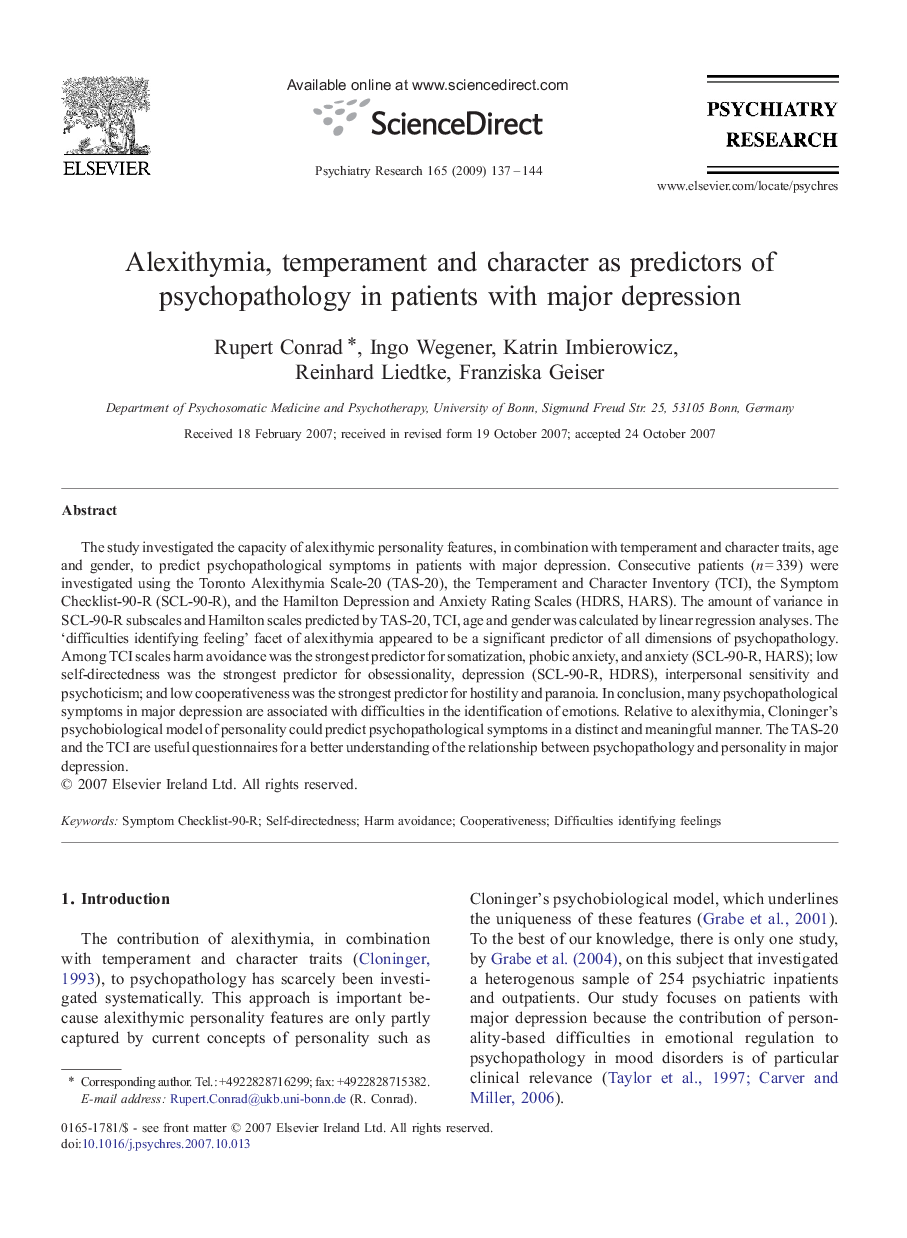| کد مقاله | کد نشریه | سال انتشار | مقاله انگلیسی | نسخه تمام متن |
|---|---|---|---|---|
| 334266 | 546034 | 2009 | 8 صفحه PDF | دانلود رایگان |

The study investigated the capacity of alexithymic personality features, in combination with temperament and character traits, age and gender, to predict psychopathological symptoms in patients with major depression. Consecutive patients (n = 339) were investigated using the Toronto Alexithymia Scale-20 (TAS-20), the Temperament and Character Inventory (TCI), the Symptom Checklist-90-R (SCL-90-R), and the Hamilton Depression and Anxiety Rating Scales (HDRS, HARS). The amount of variance in SCL-90-R subscales and Hamilton scales predicted by TAS-20, TCI, age and gender was calculated by linear regression analyses. The ‘difficulties identifying feeling’ facet of alexithymia appeared to be a significant predictor of all dimensions of psychopathology. Among TCI scales harm avoidance was the strongest predictor for somatization, phobic anxiety, and anxiety (SCL-90-R, HARS); low self-directedness was the strongest predictor for obsessionality, depression (SCL-90-R, HDRS), interpersonal sensitivity and psychoticism; and low cooperativeness was the strongest predictor for hostility and paranoia. In conclusion, many psychopathological symptoms in major depression are associated with difficulties in the identification of emotions. Relative to alexithymia, Cloninger's psychobiological model of personality could predict psychopathological symptoms in a distinct and meaningful manner. The TAS-20 and the TCI are useful questionnaires for a better understanding of the relationship between psychopathology and personality in major depression.
Journal: Psychiatry Research - Volume 165, Issues 1–2, 30 January 2009, Pages 137–144